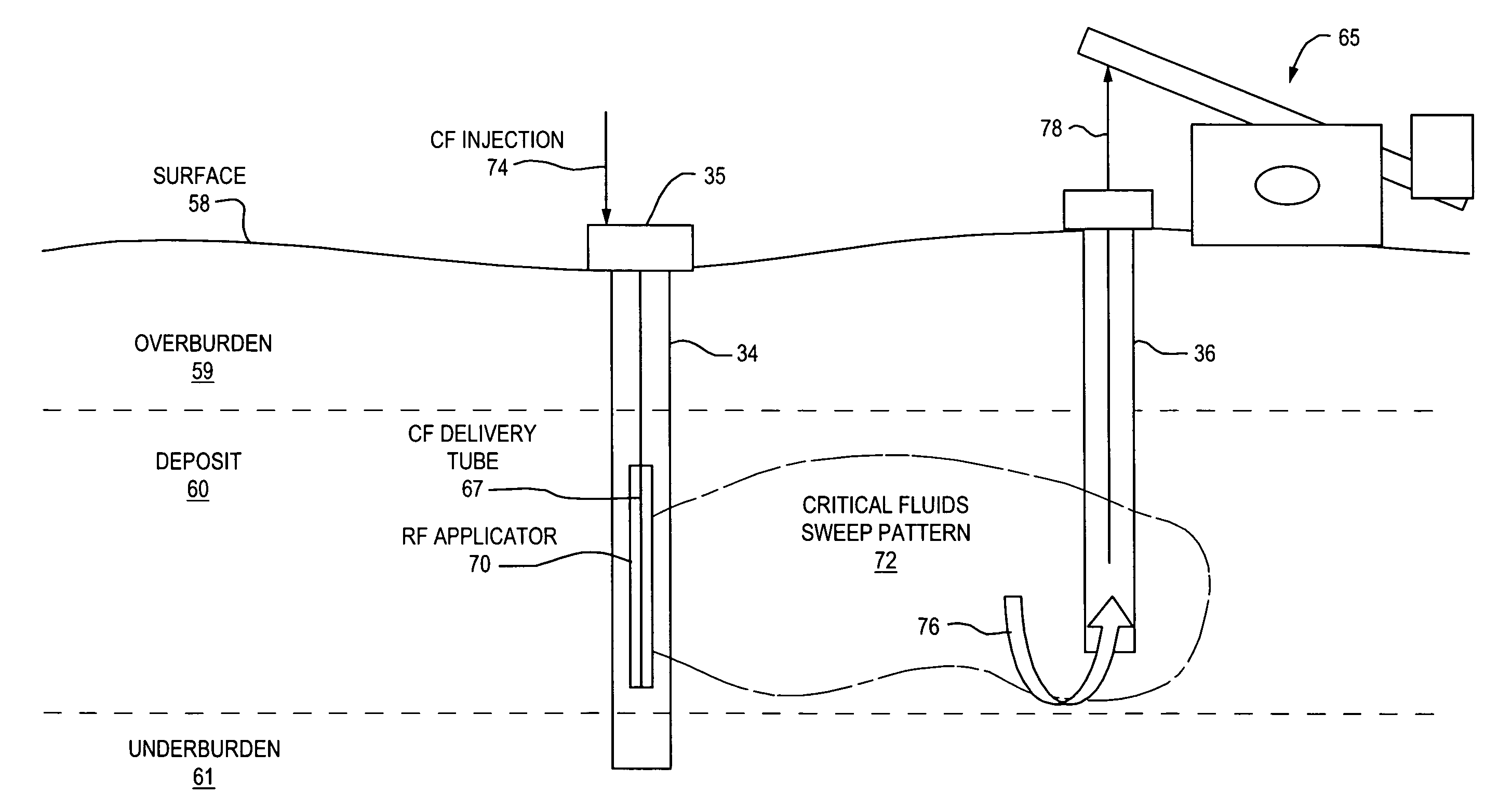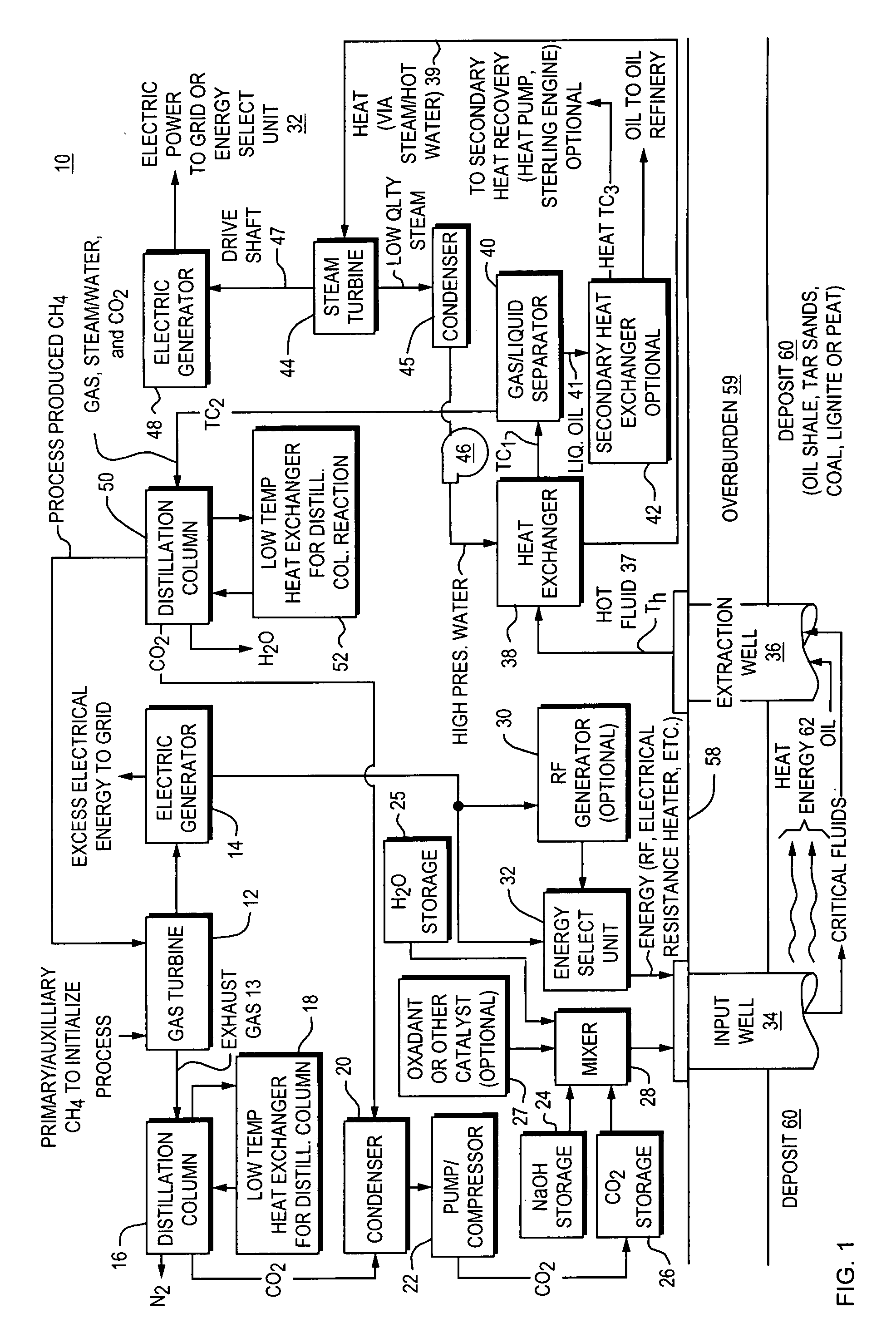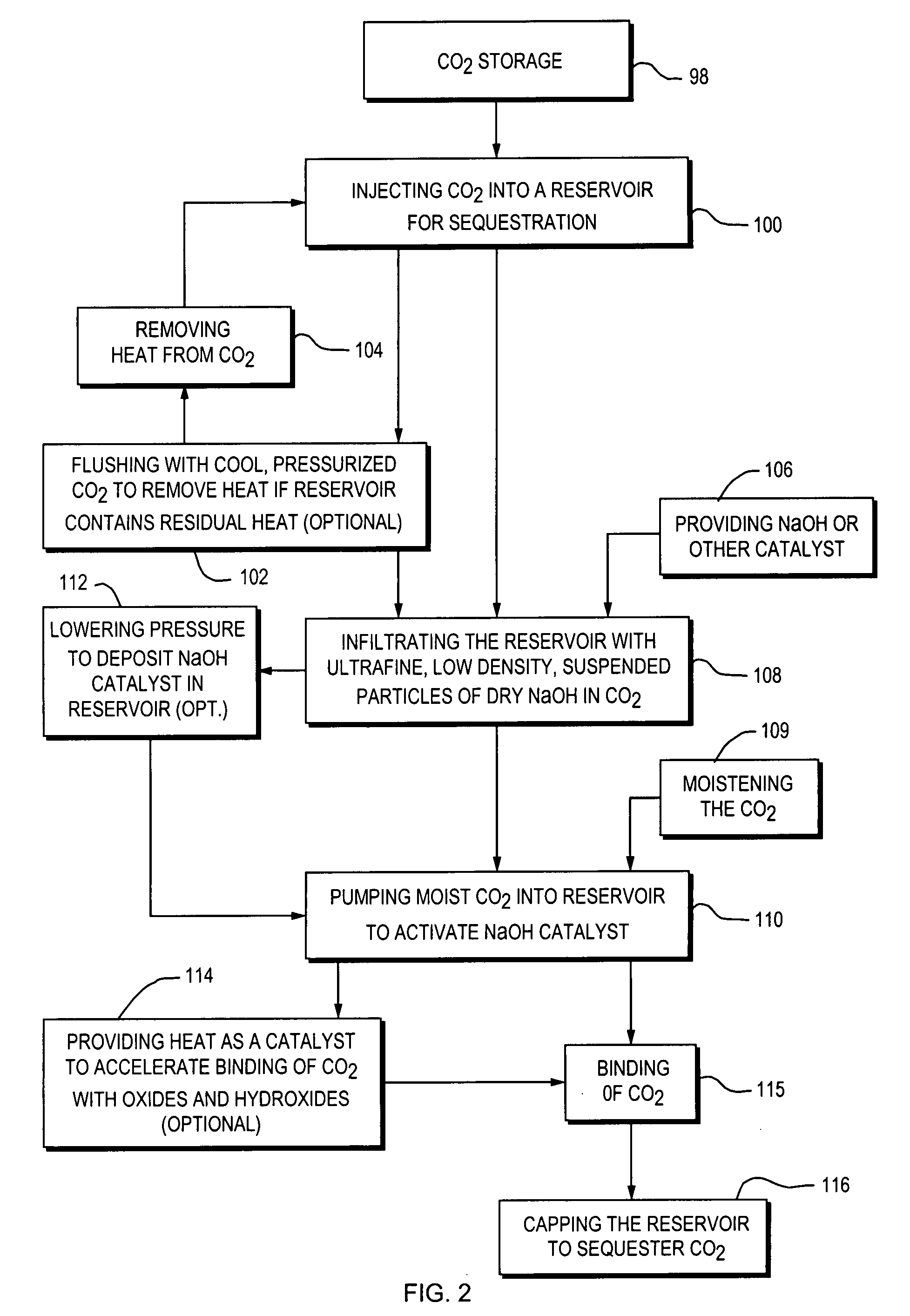Method and apparatus for capture and sequester of carbon dioxide and extraction of energy from large land masses during and after extraction of hydrocarbon fuels or contaminants using energy and critical fluids
a carbon dioxide and energy extraction technology, applied in the field of carbon dioxide capture and sequestration and energy extraction, can solve the problems of inability to economically viable, early attempts to process bodies of oil shale in situ by heating kerogen in oil shale, and attempts to process bodies of oil shale above ground, so as to accelerate the catalytic reaction of co2, reduce energy and critical fluid requirements, the effect of increasing volumetric efficiency
- Summary
- Abstract
- Description
- Claims
- Application Information
AI Technical Summary
Benefits of technology
Problems solved by technology
Method used
Image
Examples
Embodiment Construction
[0048]Referring to FIG. 1, a block diagram of a system 10 is shown for extracting kerogen oil and hydrocarbon gases from oil shale using energy such as electro-magnetic energy from an RF generator and critical fluids such as carbon dioxide (CO2) and reducing greenhouse gases and residual heat in situ during and after the extraction according to the present invention.
[0049]A gas turbine generator 12 receives a natural gas such as methane (CH4) from an outside primary source to initialize the process or internally from the system 10 to operate the gas turbine generator 12 which is connected to an electric generator 14 for generating electricity for internal system 10 use or external uses.
[0050]Any other type of electrical power generator may be substituted, including oil, coal and water powered generation. The gas turbine generator 12 provides exhaust gases which are channeled to a distillation column 16 where Nitrogen (N2) and low pressure carbon dioxide (CO2) are separated out. A lo...
PUM
 Login to View More
Login to View More Abstract
Description
Claims
Application Information
 Login to View More
Login to View More - R&D
- Intellectual Property
- Life Sciences
- Materials
- Tech Scout
- Unparalleled Data Quality
- Higher Quality Content
- 60% Fewer Hallucinations
Browse by: Latest US Patents, China's latest patents, Technical Efficacy Thesaurus, Application Domain, Technology Topic, Popular Technical Reports.
© 2025 PatSnap. All rights reserved.Legal|Privacy policy|Modern Slavery Act Transparency Statement|Sitemap|About US| Contact US: help@patsnap.com



